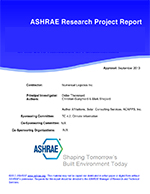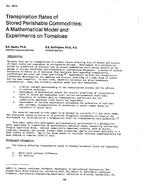The refrigerants program at the National Institute of Standards and Technology(NIST) was initiated in 1981 by the Building and Fire Research Laboratory (BRFL), with the intent to determine if a zeotropic mixture, operating in a Lorenz cycle, could be found that would give superior performance to the traditional R-22 vapor compression cycle. From the very beginning it was necessary to establish a method for predicting both thermophysical properties of new refrigerants, as well as the properties of refrigerant mixtures, for incorporation into the existing NIST performance models. This thermophysical property data program eventually grew so large within the thermophysics division of NIST that it is described separately in part 2 of this paper. These models would then be used as the primary screening for promising mixtures. The heat pump facilities, both the breadboard apparatus and the production units, that were available from the energy conservation program of the 1970s, were adapted for counterflow heat exchange between the refrigerant and the secondary heat transfer fluid at the same time. In addition, the existing evaporative heat transfer rig was dedicated to mixture measurements. All of these projects were fully under way when the ozone crisis was officially announced in 1987 and when the NIST program goal was shifted to one of determining and evaluating alternatives to the CFCs that were in current use. Some of the more significant technical reports and journal papers are listed in this paper’s references, as are the three database computer programs that were developed for public use.
Citation: Symposium, ASHRAE Transactions, vol. 107, pt. 2
Product Details
- Published:
- 2001
- Number of Pages:
- 11
- File Size:
- 1 file , 350 KB
- Product Code(s):
- D-7074


